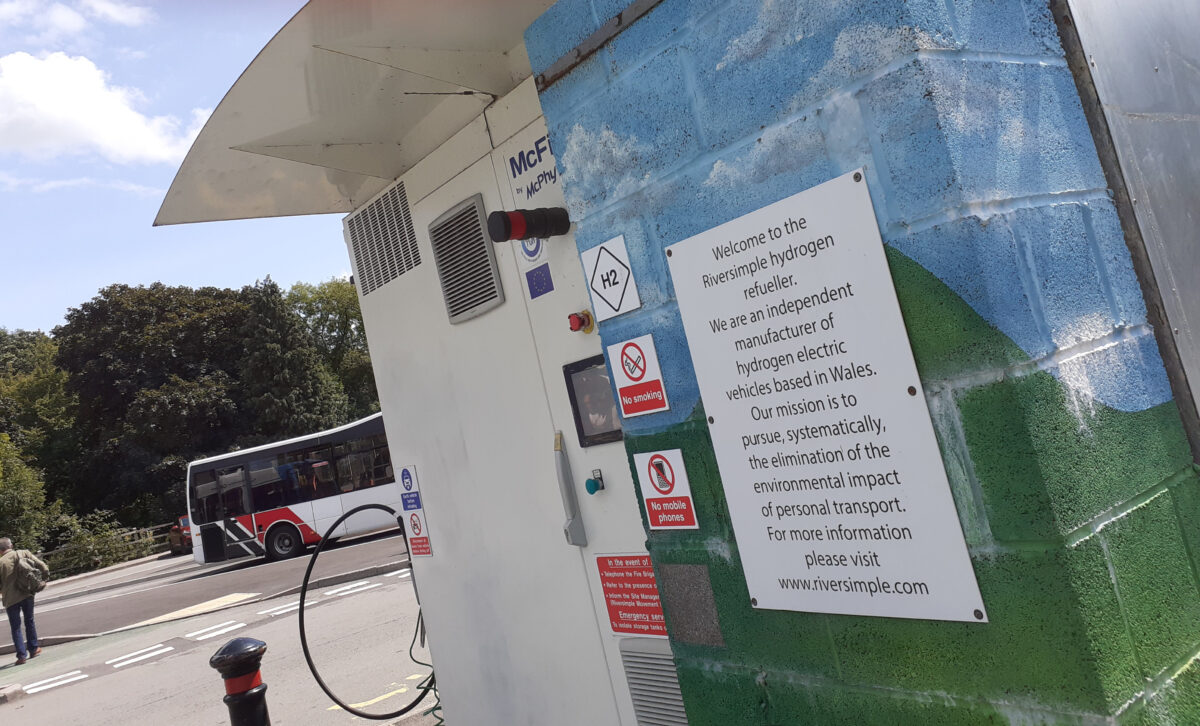In recent years, the idea of importing green hydrogen from North Africa has surfaced as a potential avenue to bolster Europe’s clean energy mix. Much of this was driven by the idea that the processes of both producing green energy, and converting it to hydrogen, were prohibitively expensive in Europe. For many in Europe, the focus quickly shifted to countries where producing renewables would be cheaper than at home.

Image: Lhyfe
The arid expanses of North Africa offer abundant sunlight and vast tracts of land to house solar installations, driving down one of the main costs of producing renewable hydrogen. Falling European solar and wind costs, however, along with the benefits of not needing to transport green hydrogen long distances, actually paint a much more positive picture of producing the energy carrier domestically, in Europe. With green energy costs expected to sink below €0.02 ($0.02)/kWh by 2038, the cost benefit currently attributed to North Africa should fade in a major way.
Understandably, cost dynamics play a pivotal role in the green hydrogen business case but energy production contributes only part of the final cost. The expense associated with shipping hydrogen over long distances could significantly hinder its economic viability. Transporting hydrogen from North Africa to European shores entails a complex, energy-intensive process, whether via pipelines or ships. Shipping alone could increase the average end price by a staggering 50-150%. This logistical hurdle not only drives up costs but also increases the carbon footprint of green hydrogen, tarnishing its clean energy credentials. Add in the geopolitical risks associated with importing green hydrogen and its perceived benefits fade quickly.
Proximity
On the other hand, locally generated green hydrogen, in Europe, has a number of distinct advantages. For one, a Europeanwide network of pipelines is currently being developed to support the cost effective rollout of green hydrogen. Immediate proximity to the market not only slashes transportation costs but also enhances demand responsiveness, a crucial factor in the evolving energy landscape and one which contributes to the very important issue of European energy security. Moreover, local production stimulates economic growth, creating jobs, and fostering a self-sufficient energy ecosystem.
Environmentally, the case for local production is equally as compelling. Europe has been making significant strides in harnessing renewable energy in recent years, with a rapidly expanding network of solar and wind installations. These renewables resources are instrumental in powering electrolyzers to produce green hydrogen, ensuring a low-carbon production process. Additionally, advancements in technology will continue to drive down the cost of green hydrogen production in Europe, making it an increasingly competitive option.
Investing in local green hydrogen production also augments Europe’s energy security. Relying on imports, particularly from politically volatile regions, could jeopardize the steady supply of green hydrogen. That is a risk that could be mitigated by domestic production. The extremely difficult energy challenges that sprung from the war in Ukraine should ensure that the importance of this factor is not overlooked in the near future.
Statement
Lastly, nurturing a robust local green hydrogen industry can position Europe as a global leader in clean energy technology. Although the continent still remains an important R&D hub for much technology, it has ceded a large slice of green energy production to third countries, particularly China. European green hydrogen would not only showcase the region’s commitment to combating climate change but also set a precedent for other markets to follow suit, hopefully providing a blueprint for a more decentralized global energy system.
One question that remains, and which represents a significant hurdle to securing widespread funding and support for European green hydrogen, is identifying and proving initial customers for the energy carrier. Thankfully, this has already been a key topic for many of the companies pioneering the European green hydrogen market. The initial targets for hydrogen producers are industrial players which can realize significant sustainability gains through a switch to the green energy carrier. Steel and glass are two particularly fitting heavy industries.
Beyond those heavy emitters, which, due to their immense heat demands, can represent a cumbersome switch, there are many applications that can easily be converted to green hydrogen without much effort. These include the chemical industry, where green hydrogen can simply replace fossil fuel derived “grey” hydrogen; and powering industrial vehicles such as forklifts, at logistics depots, and delivery trucks for commercial fleets.
While North Africa may promise a wealth of cheap green energy, it is becoming clear that the profitability, as well as the environmental sustainability, of importing green hydrogen across the Mediterranean is quickly fading. As regulations such as the European Union's Carbon Border Adjustment Mechanism (CBAM) come into effect, we should see a distinct rebalancing in terms of what will best contribute to Europe’s green ambitions. From 2026 onwards, H2 and its derivate products will need to fully report and pay into the CBAM.
Crutch
Perhaps North Africa’s ambitious green hydrogen plans can be better applied to the region's own expansion aims rather than being used as a crutch for a European industrial sector that is apprehensive about pushing the innovation agenda on its own shores.
With the cost of producing this important material here in Europe continually sinking, now is the time to position domestic suppliers to scale the technology at the earliest chance they can get. Europe has the opportunity to once again take a leadership role in a vital sector of our future energy system. This will rely on regulators and industry leaders aligning on a path forward – something which is easier said than done.
The global green hydrogen rollout is still in its early days and Europe should take this opportunity to jump in and help shape this industry of the future. The long term benefits of opting for a domestic green hydrogen industry, rather than relying once again on energy imports, will be far reaching and will help Europe make a strong push to re-establish itself as a major industrial player on the world stage.
About the author: Luc Graré is head of Central and Eastern Europe for green hydrogen company Lhyfe and is responsible for green hydrogen sales, development, and production activities in Germany, the Benelux countries, Austria, Switzerland, and Eastern Europe.
The views and opinions expressed in this article are the author’s own, and do not necessarily reflect those held by pv magazine.
This content is protected by copyright and may not be reused. If you want to cooperate with us and would like to reuse some of our content, please contact: editors@pv-magazine.com.



Another a story today is titled “Australian developer secures licenses for 8 GW green hydrogen project”
It seems that sort of thing can happen in Australia, but why not in Europe?
Lack of space? You could put 100GW of solar power in the Adriatic and barely notice it.
Maybe too many utility companies waiting for Government tenders?